By creating a hummingbird habitat in your yard you will increase your neighborhood biodiversity, improve your organic garden, and enjoy hours of fascination watching these beautiful but tiny birds, that return year after year. Hummingbirds are a joy to watch and are an important pest eliminator for your yard. So welcoming hummingbirds to your yard has many advantages for the organic gardener. But creating a hummingbird habitat requires more than just hooking up a hummingbird feeder or mixing hummingbird nectar with organic sugar. With just a little forethought you can make your garden more inviting to them.
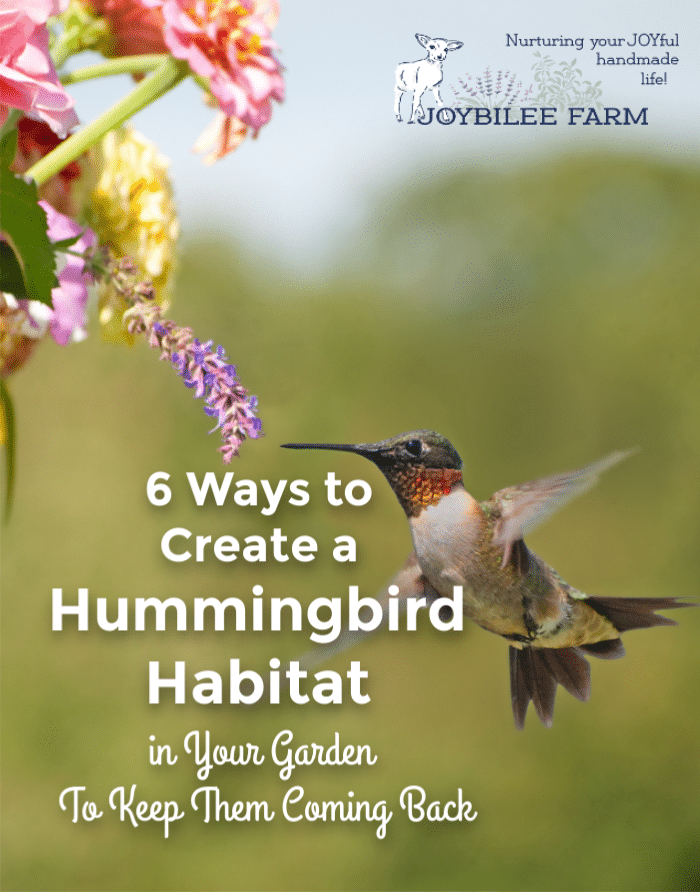
We’ve always been fascinated with hummingbirds. Since they return to the same nesting sites year after year, they develop a social communication with the people who live nearby. When our hummers return from Mexico and Central America each spring, they come to the kitchen window to let us know they are back. When we put out the feeders for them, they come to the window to thank us. When the feeder is empty, they find us on the deck, through the kitchen window, or through the living room window to let us know. When we fill the feeders again, they return to the window to show their gratitude. It’s quite entertaining. It fills me with awe that these wild creatures communicate their gratitude and their needs to us humans. We get to enjoy this transcendent experience because of the hummingbird habitat we’ve cultured in our garden. You can do this too.
These six tips, from Shelle Wells will get you started creating your own hummingbird habitat in your garden.
Create a place for bathing in your hummingbird habitat
Hummingbirds are clean folk and will bathe in several different ways, but they have difficulty bathing at traditional bird baths. Not only will they shower in the rain, if it’s available, but they will use pools of shallow water they find on rocks and leaves.
You can make a simple hummingbird bather with a large cookie sheet and a fountain pump. Get ideas from this post from Sarah M on HomeTalk titled Making a Hummingbird Water and Bathing Tray Out of a Cookie Sheet. Home Stories A to Z has directions for a beautiful setup that looks like an oasis with rocks, shells, and moss. You’ll need a bit of handyman knowledge to make either of them.
Make your yard habitat friendly by providing a fine spray of water from a mister attached to a shrub or from a small waterfall to attract hummingbirds to your garden. They will fly through the spray for a quick dip and sip.
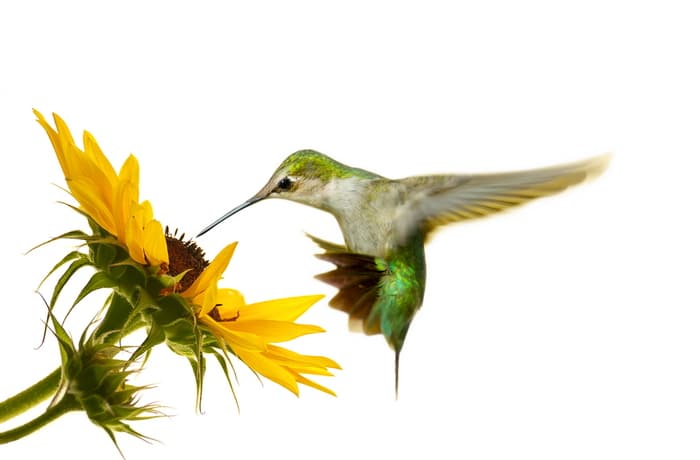
Make your yard nectar-rich for hummingbirds
Hummingbirds have a high metabolism and output a tremendous amount of energy. All that energy needs fuel. Their primary source of nourishment is nectar, which is composed of various sugars including sucrose.
To make your yard a hospitable place for hummingbirds, grow flowers that they are known to like and that are known to have an abundant supply of nectar. Plant these in groupings so the plants will stand out.
You will have the most success when you plant red or orange tubular shaped flowers that are fragrance-free. Hummingbirds find the flowers by sight and memory, not smell, and they will often return to your yard each year, looking for the plants that they remember.
Select long-blooming plants for all seasons, so your hummers know where to look for a continuous source of nectar.
Use organic growing practices to increase the hummingbird habitat
Hummingbirds need a protein source for health and insects can provide a very important part of their diet. Studies conducted by Walter Scheithauer concluded that a hummingbird diet must consist of a balance between nectar and protein.
Make your yard a no-spray zone by using organic principles to create a healthy eco-system garden. The same principles used in the rose garden work in your hummingbird and pollinator gardens. Encouraging hummingbirds by providing hummingbird habitat will help keep your garden healthy. Plus this healthy eco-system, where hummingbirds keep garden pests in check, will reduce overall garden maintenance.
Offer hummingbirds protection from predators
Predators are a significant risk for tiny hummingbirds. Cats seem to be their main foe. Be sure to hang feeders high (at least 5 feet above ground) and out of the reach of leaping cats.
Other predators include hawks, crows, large spiders, and even praying mantis. Make sure that feeders are close to the house to deter large birds from being tempted. Praying mantis can be deterred by painting your feeder hooks red, so they cannot blend in while they are waiting.
While it may seem contradictory, you should also grow foliage that will provide low hanging twigs and small branches for the birds to hide from aerial predators. Blue jays are natures alarm givers, and they will loudly announce danger when they see it. When hummingbirds hear this call or are frightened from above, they will look for low lying cover until the danger has passed.
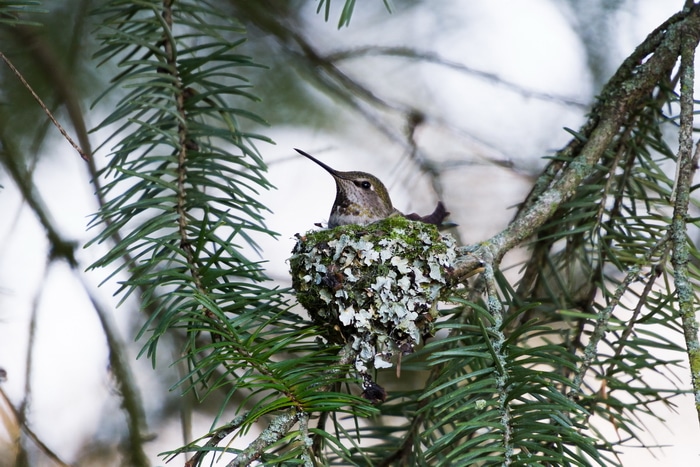
Encourage nesting by providing hummingbird nesting spots
Hummingbirds build small, compact nests that have the ability to stretch as the young grow. They will weave together found twigs, bits of leaves, available plant fibers, and use spider silk as the binder for their nests. Spider webs help to anchor the nest to the fork of shrubbery branches. These nests are small, some only as large as a quarter, and hidden from view. You might mistake it for a pile of lichen or moss.
You can encourage hummingbird nest building by growing a diversity of leafy trees and large shrubs that provide shelter at varying heights. Consider growing plants that provide soft fibers for nesting material, which might include alder, witch hazel, willow, poplar, cottonwood, beech, maple, and mulberry.
As long as food sources are abundant to nourish the family, hummingbirds in southern climates may raise 2 or 3 broods per year. In northern habitats, they will only raise one.
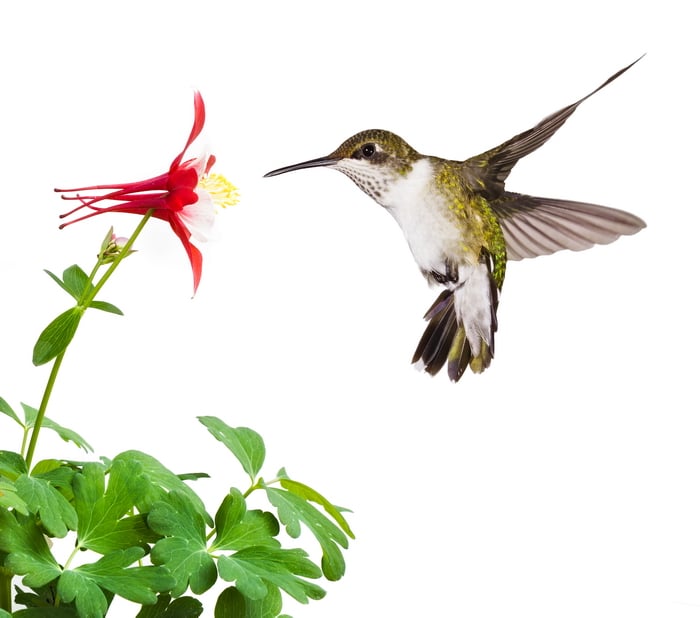
Plan for their arrival in spring
Many hummingbirds spend the winter in Central America or Mexico. Their migration north begins in February. People in the Southern USA, around the 35th parallel, will begin seeing hummingbird arrive from their winter travels sometime after March 1st. Look for them in the mid-West around the 40th parallel around April 1st and for arrival in the North at the 45 parallel and above after May 1st. Joybilee Farm is close to the 49th parallel and our rufous hummingbirds arrive around April 20th, followed soon after by the black-chinned hummingbirds, the calliope hummingbirds, and the ruby throated hummingbirds. All of them are competing at the feeders by mid May, while we may still have a bit of snow on the ground under the pine trees.
You may not have flowers in bloom when they arrive so, be sure to hang your feeders two weeks before the estimated time of arrival just in case they show up earlier. Hummingbird feeders and healthy homemade nectar will be important to these weary travelers, who will often come back to the same location each year.
Begin to prepare your perennial beds at the start of early spring and consider planting some new plant varieties that hummingbirds love. Seeds can be started indoors in late winter or early spring and brought outside as soon as weather permits.
The majority of my plants are grown with hummingbirds in mind, from early May through late September, while the hummingbirds are here (upstate New York), my time is spent watching, photographing, and enjoying them. The rest of the year is devoted to getting ready for the hummingbirds when they return the following spring. Seeds are started for annuals, cuttings are taken from some plants, and tender perennials are cut back to begin anew.” Arnette Heidcamp, Hummingbirds, My Tiny Treasures
Get more hummingbirds with an inviting hummingbird habitat
Hummingbirds will find your yard inviting when you plan for their arrival by offering a rich hummingbird habitat. Have nectar-rich plants available, and provide shelter and materials for nesting. By following these 6 tips you’ll create a successful hummingbird habitat in your garden that will keep them coming back every year.
Once they arrive be sure to feed them the healthiest hummingbird nectar using this recipe for a boost while they settle in.
Learn more about using herbs for health and wellness from my Book
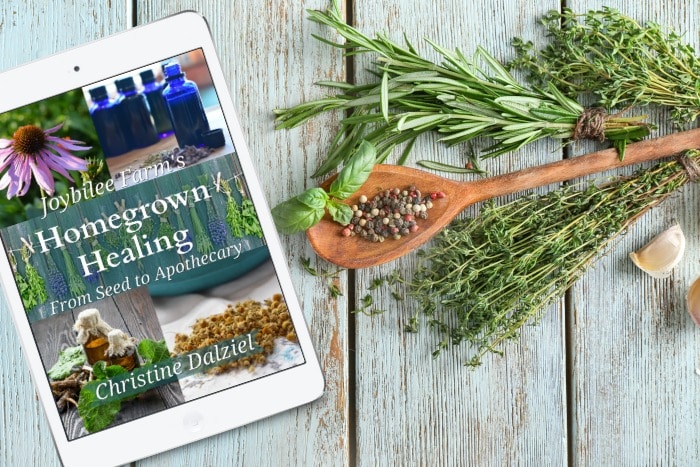
Homegrown Healing From Seed to Apothecary
My book Homegrown Healing From Seed to Apothecary will help you grow healing herbs in your own garden. Focusing on the easiest plants for beginners to grow, Homegrown Healing From Seed to Apothecary covers 30 plants, recommended by professional herbalists, that can be grown in the temperate zone. Initial garden preparation, garden design and harvesting tips lead the novice herbalist into early success. Choose which herbs to grow, learn how to use these herbs for your family’s health and wellness using the guidance in my book. You can find out more about this useful guide to growing more herbs and using them strategically here.




You don’t need special hummingbird food. Sugar and water is all you need. I prefer organic sugar.
Good Morning
I found your web site very interesting. My wife and I have two hummingbird feeders and we use EzNector. We looking for a way to make our own, that would benefit our little feathered friends.